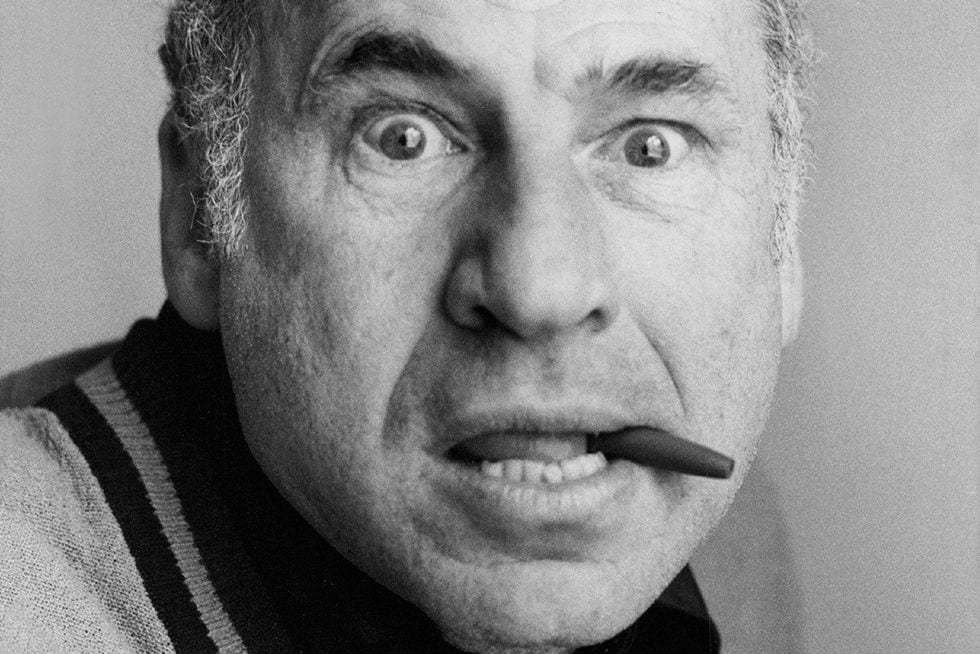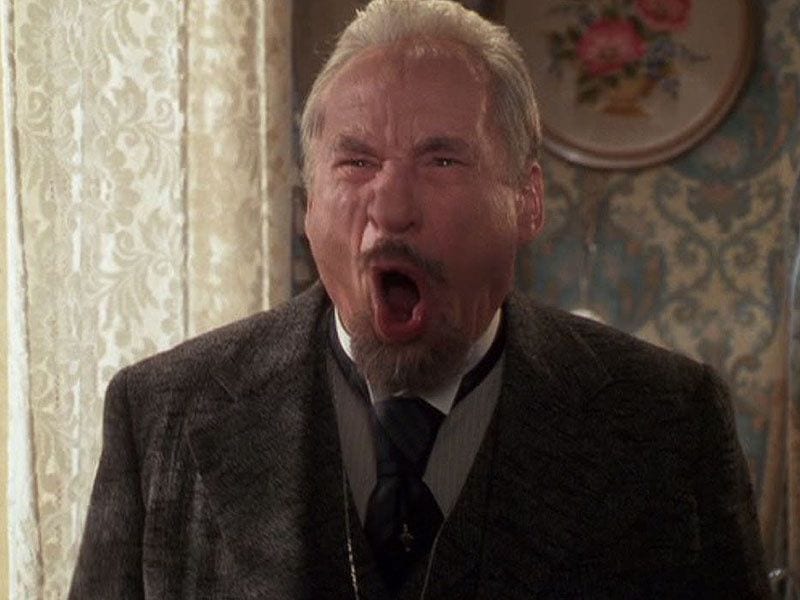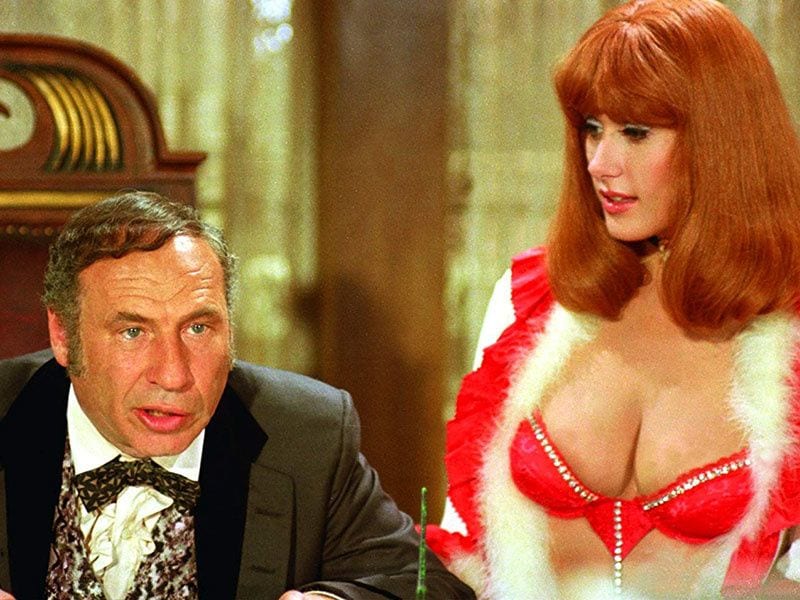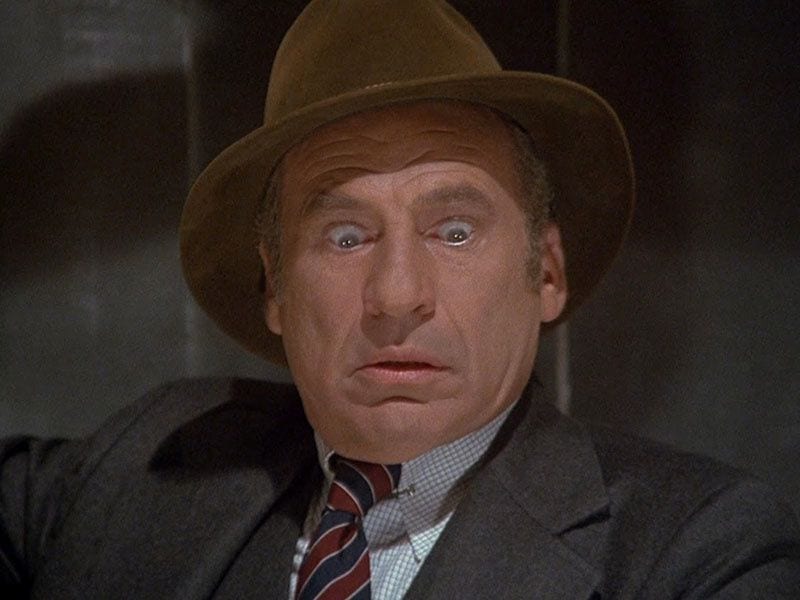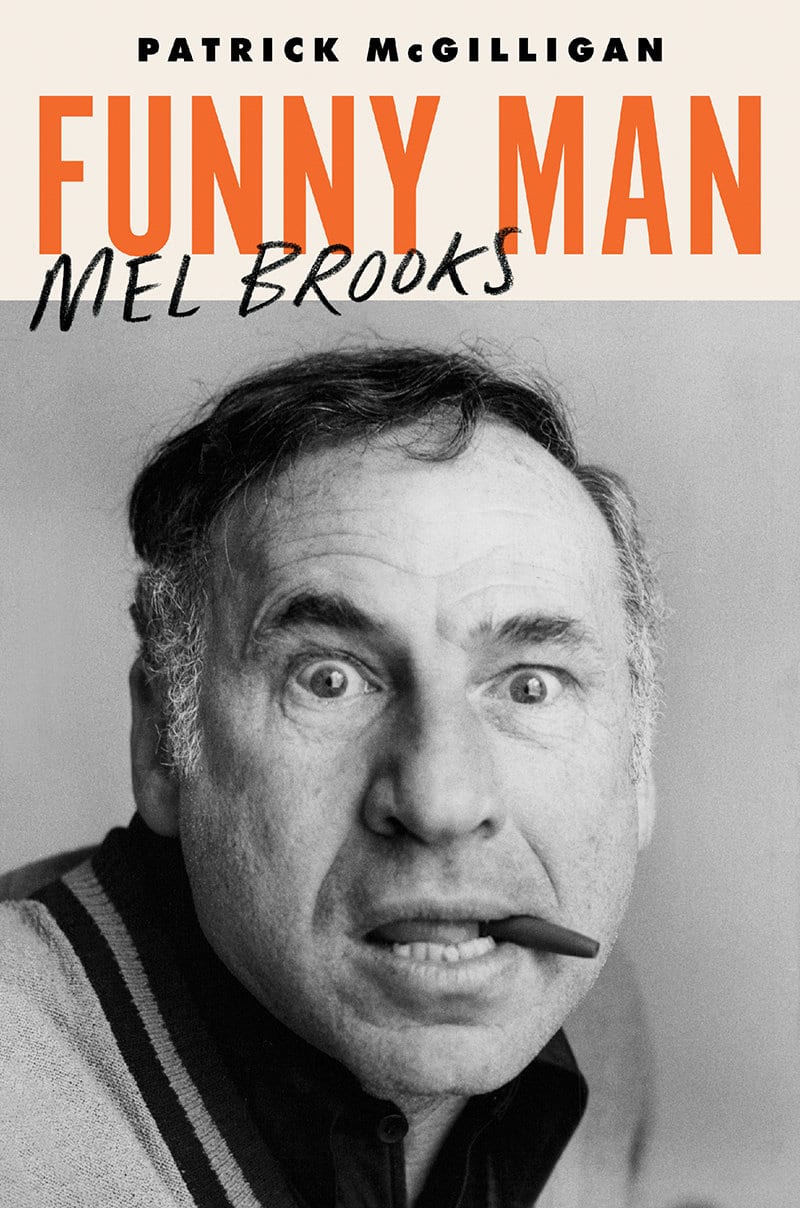
Comedy has always seemed to be an art form dependent on wordplay, timing, execution. A comedian has monologues, a comic has “bits”. A comedian has a persona, a comic has a “premise”. The particularly “American” sensibility of cinematic comedy that blossomed in the ’60s with such overstuffed spectacles as Stanley Kramer’s It’s a Mad Mad Mad Mad World (1963) depended on a collection of characters known to a viewing public eager to have its appreciation of broad comedy validated. Dramatic acting stalwart Spencer Tracy headlined that film as a police captain investigating the search for a missing fortune. Milton Berle, second lead, was almost 50 years into his show business career, though his main claim to fame was when he created appointment-viewing television comedy with the “Texaco Star Theater” in the late ’40’s through the ’50s. The third lead, Sid Caesar, whose credentials as the King of TV comedy came at the tail-end of Berle’s and lasted a few explosive years, is the means through which Mel Brooks made his name as a writer eager to please.
The mainly male and purely white world of broad comedy would temporarily see its last gasp with this style of ensemble humor featuring loud and abrasive comics chewing every inch of scenery. Brooks had nothing to do with It’s a Mad Mad Mad Mad World, and Patrick McGilligan‘s exhaustive new biography of the comic auteur, Funny Man, doesn’t need to go into it, but understanding what that style represented is a good starting point for the sensibility of Brooks. At 92, the man is still working in animated film as a voice actor. His last original script, 1995’s Dracula: Dead and Loving It, was his final effort in the world of broad satirical comedy. By that point, Brooks seemed to be coasting on the amazingly long-lasting goodwill of an audience that latched onto him with 1974’s Blazing Saddles and stayed through such hits as Young Frankenstein (1974), Silent Movie (1976) and High Anxiety (1977). The films that followed might not have always been strong and consistent by even the most generous measure, but again, that’s not the point.
McGilligan has taken on a difficult task of trying to encompass the life and times of a living comic legend. He starts with Melvin Kaminsky, in 1926 Brooklyn, growing up in the shadow of Hitler’s Germany so far away yet still so close. He quotes Brooks on “the strange amalgam, the marvelous pastiche that is me.” Laughter became the only means to a definite end: entertaining people. Brooks focused on the neighbors in his apartment house, people with stutters and strange ways of walking. The tendency for this type of comedy to draw on the differences of others for quick laughs has long since fallen to a more sensible (if at times insensitive) type of humor, but the reader quickly comes to understand that cruelty had probably always been at the core of American comedy. If that person is different, either through design or choice, that equals fair game for comic ridicule.
As for romance, McGilligan concludes that most of Brooks’s film comedies “…would be suffused with a young teenage boy’s sensibility… usually leering and naughty with little nudity or sex.” Brooks becomes a drummer, and McGilligan wisely pulls some quotes from his subject to explain the connection between proper musical rhythm and effective comic execution:
“Some punch lines should be on the offbeat… they shouldn’t be right on the beat because they’ll sour. There’s a thing called syncopation, in which you feature the offbeat instead of the beat itself.”
It’s these moments, in which we meet Brooks the intellectual, where this book shines. Had McGilligan trimmed much of the discussion of taxes and wages and accumulation of material things while friends came and went, the reader might have gotten a better sense of Brooks the artist. Indeed, it takes a while for this story to get started. Melvin Kaminsky anglicizes his name to Melvin Brooks, which leads McGilligan to conclude that his subject was sanitizing his Jewishness. Brooks enters World War II and “…his character was forged when a bomb hit his unit one day… He thought, ‘…if I get through this, I’ll get through anything.'” Brooks meets saxophonist and comedian Sid Caesar at the Copacabana nightclub in 1947, and an alliance seems to immediately form:
“Brooks saw Caesar as a role model for everything he dreamed of being and as a mentor who might light the path ahead for him.”
Again, perhaps because this path is well-trodden, McGilligan wisely pulls quotes from writers such as Kenneth Tynan, who believed that Brooks saw “his relationship with Sid Caesar [as that of] a child clamoring for the attention and approval of a father.” The legend is that Caesar’s TV program, Your Show of Shows, was fictionalized in the 1983 film, My Favorite Year (produced by Brooks), and Neil Simon’s 1993 play, Laughter on the 23rd Floor. A variation of it could be seen in Carl Reiner’s The Dick Van Dyke Show (1961-1966), with Reiner as a maniacal Caesar stand-in named Alan Brady. McGilligan steers clear of yet another version of this story (wise, because he wasn’t there) and instead stays on the sidelines. Brooks meets his namesake, Mel Tolkin, who in turn introduces him to Gogol, Tolstoy, and Dostoevsky. Brooks reflects:
“The Russian novelists made me realize it’s a bigger ballpark than the Bilko show… I wanted to be an American Moliere, the new Aristophanes.”
McGilligan notes (but doesn’t name names) that some people accused Brooks of enabling Caesar’s alcoholism. Jerry Lewis, an object of worship for our subject, comes into the narrative. Brooks’ insecurity and self-loathing lead to therapy. He’s elevated from being a mere “gag man” for Caesar (supplying the kick to jokes) to a full-blown writer. McGilligan writes that Brooks was “…like an addict in his need for intimacy with men.” Brooks reportedly hated Hollywood, but the future was in movies. A first marriage starts and seems doomed from the beginning. The story becomes thick and complicated. Where are we going? When McGilligan remembers a primary theme, the reader is relieved:
“In time Brooks would become the Matisse in a museum, but he’d keep Your Show of Shows alive in his films.”
Modern viewers of Mel Brooks films, 1967’s The Producers and 1970’s Twelve Chairs can see the connection between cultivated cinematic style with a European sensibility and the desperate need for broad slapstick shtick. There’s a temporary dive into the motivations of Jewish humor in Chapter Five that the reader might wish had been expanded at the expense of the many pages dedicated to financial and domestic strife. McGilligan quotes from an analyst of Jewish humor, how the Jewish comic “…sharpens… the dagger which he takes out of his enemy’s hand, stabs himself, then returns it gallantly to the Anti-Semite [and says] ‘Now see whether you can do it half as well.'”
“Club Caesar”, (Chapter Five) is a long one not just in content but style. When McGilligan writes: “Sometime in the fall of 1958, it must have been…” the reader may become frustrated. Why go this far without knowing you can approximate the time? Jerry Lewis, Woody Allen, and Victor Borge move through the narrative with effective speed. Brooks separates from his wife, moves in with pal Speed Vogel, and the difference in their living styles inspires Neil Simon’s The Odd Couple (1965). Brooks clashes with Lewis on the set of the Lewis’s The Bellboy (1960) and egos explode. Later, in the genesis of the comedy sketch The 2000 Year Old Man (1975), an improvised bit between Brooks and Carl Reiner where Reiner is a straight man interviewing Brooks as the title character, we get Brooks at the start of a stand-up comedy revolution. The difference between this act of Brooks and Reiner, though, was perspective:
“Jewishness… had in fact been unmentionable on Caesar’s shows… ever since Hitler and the Holocaust. That was one reason why it took so long for the 2000 Year Old Man to go public. [Carl Reiner asks]: ‘Would WASP America get him?’ “
Again, this biography would have been helped had McGilligan narrowed his focus. Did he want to chronicle every particular element of Brooks’s life and times in excruciating detail, or did he want to focus on the specific highlights of his impressive artistic career? There are samples of the latter, but greater detail and context would have made this an easier book to fully appreciate.
The 2000 Year Old Man became hip and popular in the early ’60s age of nightclub comedy. It mixed improvisation with the surly cerebral intellectualism that was the focus of such stand-up monologists as Mort Sahl and duo acts like Mike Nichols and Elaine May. Brooks and Reiner would not win a Grammy for Best Comedy Album with this act until their 1998 update, when the title character would reach (along with all of us) the year 2000.
Funny Man trudges along, through the early ’60s, through the conflicts with Lewis and Brooks’ early failure on Broadway. It would have been more interesting had McGilligan chosen to shine a new light on the hip environment of early ’60’s nightclub comedy and the role Brooks’ and Reiner’s The 2000 Year Old Man played in that cerebral brand of improvised entertainment. Brooks was among the guests on the first episode of The Tonight Show Starring Johnny Carson on 1 October 1962. The kinescope of this first broadcast has been lost to history, making the legend only grow with time. He meets actress Anne Bancroft, less than ten years into her film career. She wins a Best Actress Academy Award (1962, The Miracle Worker), he’s re-connected in Hollywood with Oscar-winning Best Short Subject Cartoon, The Critic (1963), and an alliance is formed that would last until Bancroft’s 2005 death. She would co-star with Brooks in the 1983 film To Be or Not to Be (Alan Johnson) and have a supporting role in the Brooks-produced (and David Lynch directed) 1980 masterpiece, The Elephant Man. Bancroft was the yin to Brooks’s often mercurial yang.
Other characters come in and out of this narrative, collaborating with and breaking from Brooks when their purpose seems to have been played out. Writer Buck Henry would collaborate with Brooks on the TV show Get Smart (1965-1969) and co-creator credit would be long in coming (much to the former’s chagrin.) Actor Gene Wilder would help Brooks make his name in film with The Producers (1967) and Blazing Saddles and Young Frankenstein (both 1974), clashing frequently over on-screen acting choices and writing credit or story ideas. Brooks spends much of the ’60s, before his 1967 debut as a filmmaker, working in advertisement, developing TV ideas, and maintaining a presence that would often work against his best interests, especially with Buck Henry. McGilligan surmises, again taking from a Brooks interview with Kenneth Tynan:
“…Brooks attached Henry by way of defending himself. ‘I had a reputation for being a crazy Jew animal, whereas Buck thought of himself as an intellectual…What Buck couldn’t bear was the idea of this wacko Jew being billed over him…he’s not an intellectual, he’s a pedant.”
It’s this push and pull between artistic aspirations and broad comedy options that would have made for a greater focus than the minutiae that comprises most of the second half of this book. McGilligan seems to be suggesting that the major struggle in the career of Mel Brooks was less the assimilation of a Jewish sensibility into mainstream American comedy than it was his need to intellectually prove himself. His contemporary, Woody Allen, was lampooning Russian film in the ’70s with Love and Death, nearly a decade after Brooks’s similar 12 Chairs. Most readers coming to this book will be familiar with the unbeatable blasts of Blazing Saddles and Young Frankenstein in the ’70s and the Broadway smash version of The Producers and a deeper dive into the artistic choices (both in the writing and visual elements) would have made for a more streamlined, interesting reading experience.
Less than halfway through this massive book, McGilligan notes that at 41, Brooks was a late-bloomer when he released The Producers in 1967. While the author should be credited here as noting the obvious, it only serves to better illustrate that the life and times of Mel Brooks might have been better served had he split this into two volumes. Certainly there was enough material in this first half to expand and focus on success as one of Sid Caesar’s minions or as an originator of improvisational team comedy with Carl Reiner. In 1971, and the Chapter “Blazing Mel”, McGilligan cites an early 1972 quote from Brooks:
“I’ve used up all my money, and I’m living on Anne’s money, but she’s pregnant… soon… we’re going to be homeless.”
The origins of Blazing Saddles as a property initially called “Tex X” (after Malcolm X) and with contributions from Richard Pryor, could have been a separate narrative. The story of writer Andrew Bergman developing this idea could have used elaboration, especially with his highly academic theoretical concepts of creating a Western movie with a black militant sensibility. “Tex X” eventually became the film that’s now such a huge part of cinematic comedy history. Brooks builds his stock company: Harvey Korman, Cloris Leachman, Madeline Kahn, and various other players. Wilder returns for his second of three leading roles. Of this film, McGilligan notes: “Never again would a Mel Brooks film feel so liberated.” More reflection from Brooks puts it in perspective:
” Blazing Saddles is Dixieland jazz, where everybody gets up, has a riot or a solo, and there’s a fierce harmonic blend of joy and freedom.”
McGilligan succinctly notes that while Blazing Saddles might have been an embrace of anarchy, “…the Frankenstein spoof [Young Frankenstein] became his most controlled work.” In Young Frankenstein, actor Marty Feldman (as Igor) comes up with a “Walk This Way” gag from an old Yiddish joke. Aerosmith takes the line as the title and sensibility of one of their early hits. McGilligan notes that there was controversy in the use of rape as a source of humor in one scene, and the story had other typically crass elements, but the film marked a first for Brooks: “The cast members were not stand-up comedian; they were actors in career ascendancy giving ebullient performances… Brooks’s direction is restrained.”
Brooks doesn’t come across as the warmest of leaders and collaborators throughout Funny Man, and these stories don’t seem to shed light on any heretofore unknown impressions. Indeed, Brooks seemed incapable of modesty. Story credits automatically seem to stop in his berth, perhaps by intimidation more than anything else; it would be primarily his name in the writing credits, no matter the degree of his input. He makes a personal connection with Alfred Hitchcock while preparing and shooting the 1977 Hitchcock homage, High Anxiety, set to be his first starring feature. The song and dance elements that always surfaced in his stories were here as well, but any hopes of attaining awards-worthy recognition (especially for the title song) would disappear in the year of Woody Allen’s Annie Hall. The latter had no song in contention that year, but it represented a distinct direction in American cinematic comedy from broad and outrageous to smaller and reflective.
Some of the more interesting elements in Funny Man come when Brooks is confronted with the films that came in the wake of his ’70s heyday. He notes of the Airplane! creators: “…I think they rush to the joke without an overview or structure.” He confronts Monty Python’s Michael Palin with “I forgive you guys everything,” implying they were guilty of lifting gags (particularly in films like Life of Brian) without credit. Palin writes (taken from his journals): “…Brooks has an almost pathological inability to accept competition-it’s all a reduction of his own world.”
Lawsuits are filed over story credit for Brooks-produced prestige art-house films The Elephant Man and Graeme Clifford’s Frances (1982). These are fascinating, at times uncompromising films, but McGilligan spends too much time in the machinery of a litigation narrative. The ’80s were not as kind to Brooks and the story drags. We go down the well of mediocrity with him, only to be brought up again years later with the 2001 Broadway smash success adaptation of his 1967 debut film, The Producers.
McGilligan clearly notes that the third act in the life of Mel Brooks has been “fantastical indeed”. Unfortunately, by the time we reach the end of the book even the most patient reader would be forgiven if they feel exhausted. Gross-out comedies like Paul Feig’s 2011 film Bridesmaids and boy-child juvenilia from the worlds of Adam Sandler and Judd Apatow would be nowhere without the standard set by Brooks. That kind of modern perspective of Mel Brooks’s place in 21st century American cinematic comedy would have helped this book (along with cutting perhaps 25 percent of the text.) The modern comedy movie fan might take offense at elements of sexism and homophobia in classic Mel Brooks films, and stretches of each film can be painfully outdated and unfunny today as they were at times perceived in his day. McGilligan knows exactly where he wants to go in Funny Man, but like the best of Mel Brooks films in the ’70s, it’s a book that wears out its welcome in the second half and drifts home through the final pages, floating on a fumes of goodwill for a time long gone.

